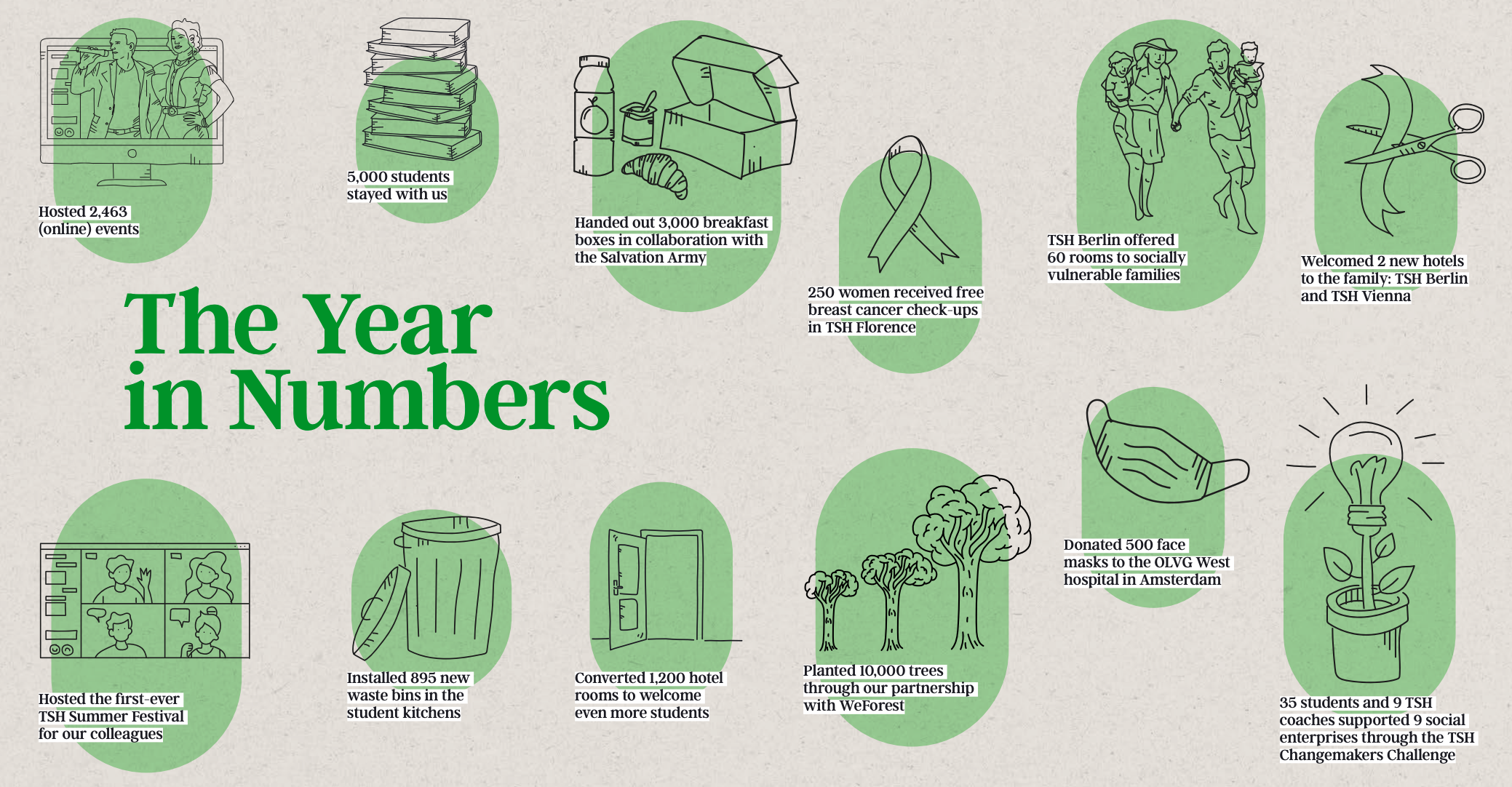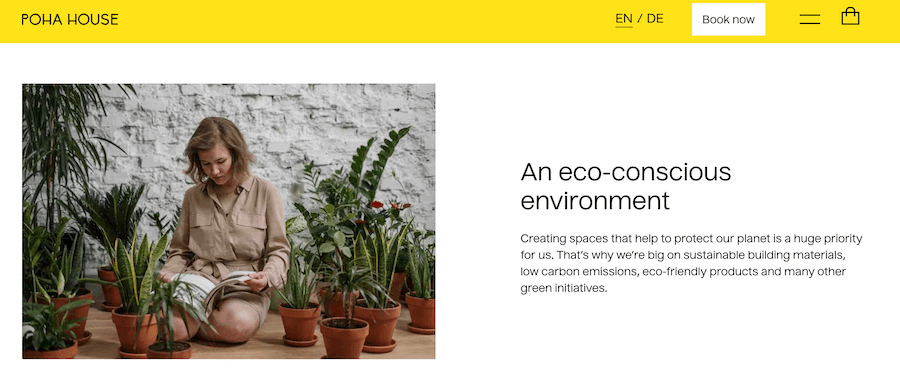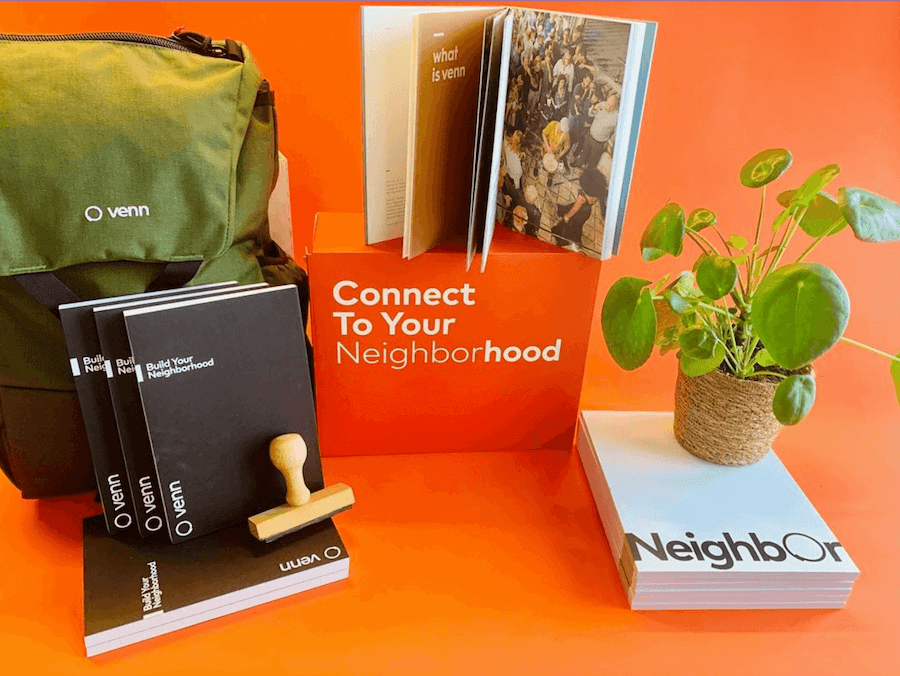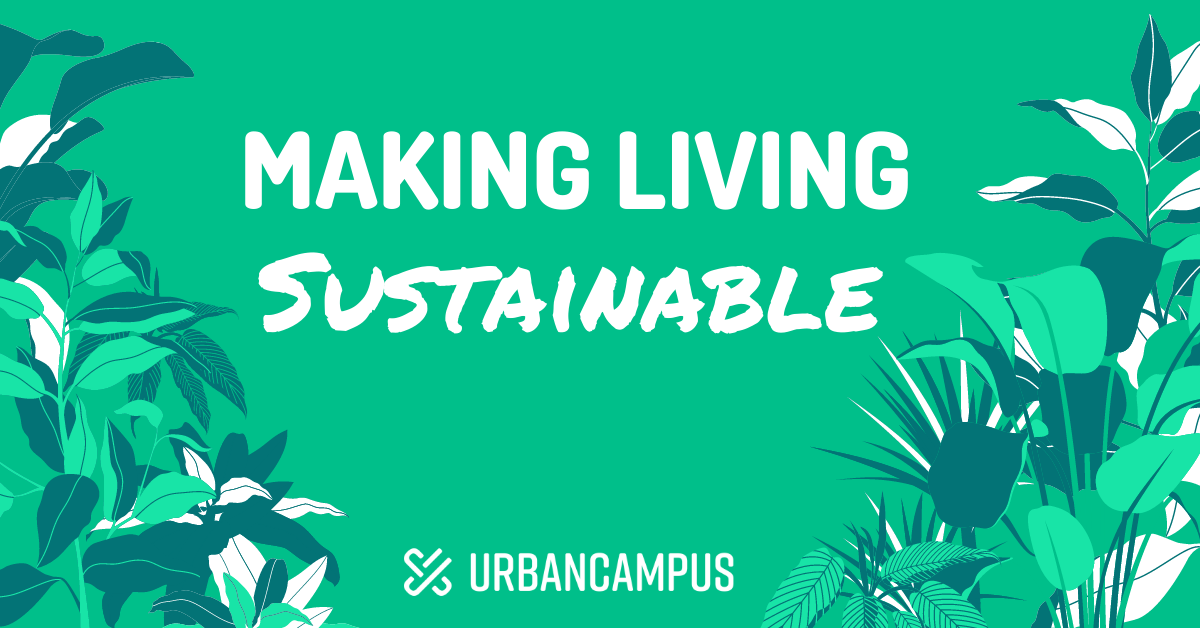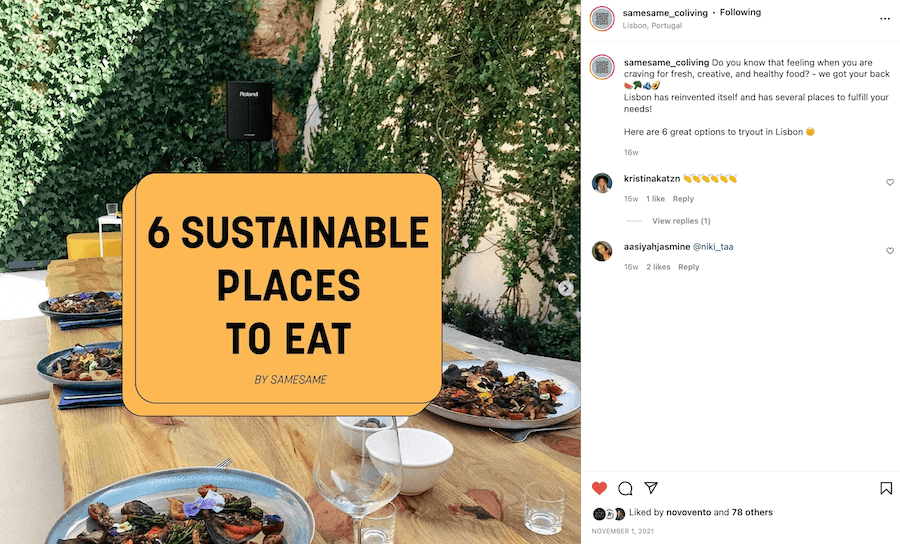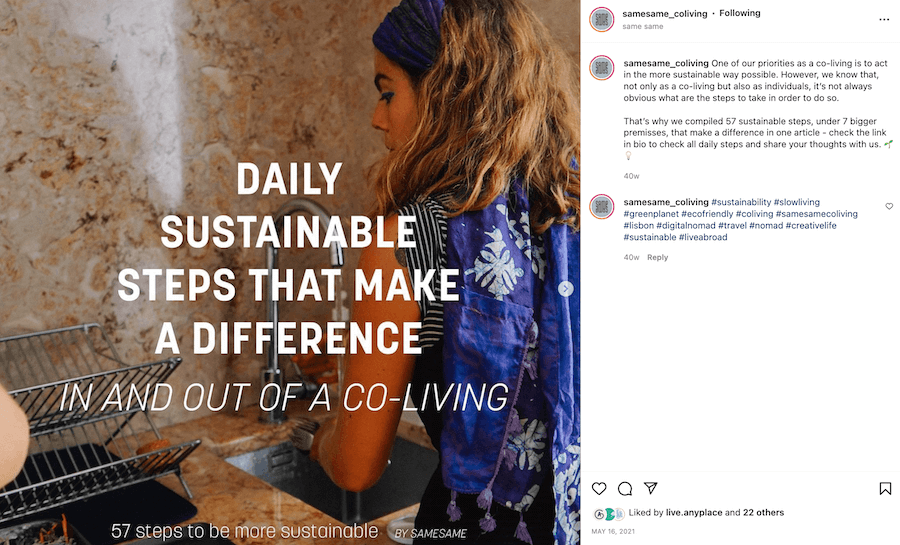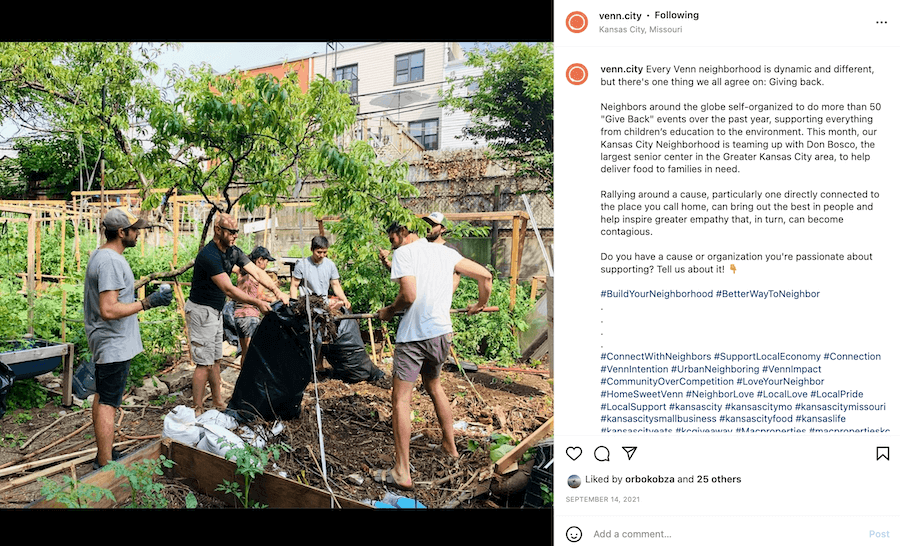Our research shows that embedding ESG (environmental, social, and governance) and social value (social, environmental and economic impact) has many benefits for your business. In addition, it is becoming increasingly important to investors, municipalities, staff and consumers. Conscious Coliving has begun hosting workshops on how to develop and communicate your impact strategy as a shared living businesses. This article recaps a part of a recent impact workshop and explores how to brand, market, and showcase your impact strategy.
Shared living businesses can showcase their impact in many ways
You can brand, communicate and market your impact strategy in many different ways, on both a B2B (business-to-business) and B2C (business-to-consumer) level.
On a B2B level, you can use corporate reporting, staff onboarding packages, vision and mission statements, planning applications, investor decks and more to showcase your impact and sustainability strategy.
On the B2C side, you can do this through your social media, website, blogs posts, onboarding packages, signage, wayfinding, sustainability events and more.
Let’s dive in and explore a few specific examples.
Corporate Reporting
The Student Hotel, a hybrid hospitality model that offers coliving, student accommodation, hotel rooms, co-working, and events, communicates its impact through regular corporate reporting.
For instance, one of their latest impact reports showcases the level of impact they have had on elements including social support, waste management, volunteer activities, donations, and trees planted. They use this for both B2B and B2C reporting and communications.
In line with their corporate sustainability strategy, The Student Hotel have recently secured €145 million in social and environmental impact financing from UniCredit for their new Rome and Florence locations. The loan includes terms for the achievement of a BREEAM “Very Good” rating for both locations and adherence to the EU Taxonomy for sustainable activities as criteria for the green guarantee by SACE.
Mission Statement
At POHA House, a new shared living company based in Germany, sustainability is at the core of what they do. Their mission statement on their website expresses this, and they say they are fostering ‘eco-conscious environments’ and creating spaces that protect our planet through sustainable building materials, low emissions and other green initiatives.
Employee Onboarding Packages
An example of a B2B employee onboarding kit that communicates its impact comes from Venn. Their employee onboarding kit is meant to be the first step in feeling a sense of ‘Belonging’ – one of their core values – and its various items are designed to help employees get around their new neighborhoods. In addition to this starter kit, their onboarding process includes an introductory tour of the neighborhood and of their localized ‘Life at Venn’ app.
Resident Onboarding Packages
Another example is Cohabs and their resident onboarding package. They give new residents a reusable water bottle, a tote bag that says ‘fuck plastic’ on it, up-cycled laundry baskets and other sustainable goodies. The Cohabs vision includes having homes with sustainable appliances, a rainwater harvesting system, solar panels, smart energy monitoring tools, recycled furniture and construction materials and other sustainability features.
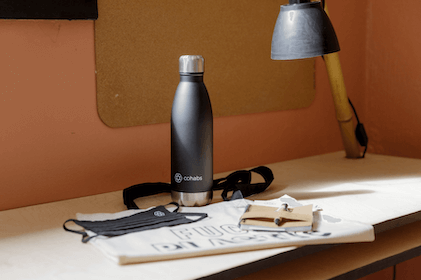
Signage/Wayfinding
Cohabs also uses signages and wayfinding to ‘nudge’ residents and embed impact and sustainability throughout their spaces and communications. The images show a few examples, like the ‘save water, drink beer’ sign, or even their weekly calendar which can be used to allocate people to recycle and compost, for example.
They also have communications about diversity and inclusion, which is one of investors’ main criteria for ESG reporting.
Blog Articles
Impact can also be showcased through content such as blog articles. One example is Urban Campus which shares content about sustainable living approaches they have, including urban farming, composting and cooking classes with local products / products from their garden.
Social Media
A similar approach can be done on social media, and / or a mix of cross channel communications. A shared living community in Lisbon called Same Same, for instance, often shares sustainable living tips, including the healthy eating guide and daily sustainability tips guide.
You can also see more about their sustainability vision here.
Sustainability & Impact Activities
Finally, there are a range of different initiatives you can do to promote sustainability and impact throughout your community, including neighbourhood waste clean ups, volunteering, education and awareness initiatives (e.g. impact movie nights) and so much more.
Venn have some inspiring examples of this, such as organizing 50+ ‘Give Back’ events a year, which is a great way to create a clear goal for your impact initiatives. They have clean ups, food rallies, community gardening and coffee give out events, amongst many other initiatives.
In Conclusion
In this blog post, we have shared case studies of how shared living businesses around the world are showcasing their impact and sustainability strategies and goals.
In conclusion, there are many ways that your shared living business can communicate and showcase the impact that you are having.
Clearly and creatively communicating your impact is a smart marketing strategy that can support you in attracting aligned residents, staff, and investors.
Explore how we can support you
Conscious Coliving supports shared living businesses and communities to embed social, environmental and financial value through research-based content, education and consulting.
Since 2018, we have helped shared living businesses and communities harness the power of impact and sustainability.
This article has been authored for you by:

Penny is Director of Research & Sustainability at Conscious Coliving. She has an MSc in Social Research Methods, and her PhD explores how shared living may enable lowered environmental impacts. She has consulted on numerous shared living projects, specialising in impact strategy, concept, and community. Penny has presented at conferences including the Co-Liv Summit, the Urban Living Festival, BTR360 and more. She has also authored publications in The Developer, Coliving Insights Magazine, the book Urban Communal Living in Britain, as well as being interviewed by the BBC and the Guardian about shared living.
Matt is responsible for designing community experience and impact strategies and measuring the social value of coliving communities. Matt is also a founding member and current Head of Community of Co-Liv and has worked for The Collective on their Impact Team.
